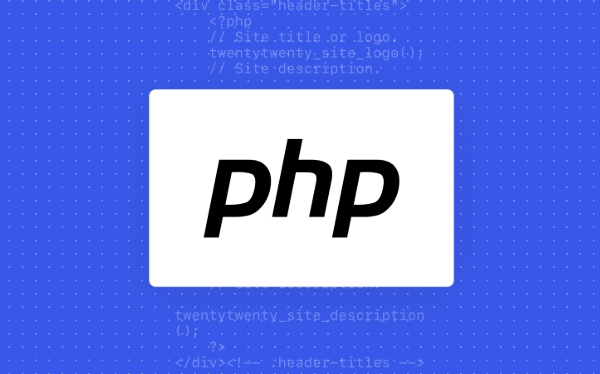To prevent session hijacking in PHP, the following measures must be taken: 1. Use HTTPS to encrypt the transmission and set session.cookie_secure=1 in php.ini; 2. Set the security cookie attributes, including httponly, secure and samesite; 3. Call session_regenerate_id(true) when the user logs in or permissions change to change to change the Session ID; 4. Limit the Session life cycle, properly configure gc_maxlifetime and record the user activity time; 5. Prohibit exposing the Session ID to the URL, and set session.use_only_cookies=1. These methods can effectively improve conversation security.

Preventing Session Hijacking in PHP is not actually complicated, but it does require some basic security awareness and configuration. Session hijacking mainly refers to an attacker stealing the user's session ID, thereby pretending to be a user for illegal operations. Here are some practical ways to reduce this risk.

1. Use HTTPS to encrypt the transmission of data
This is the most basic and important point. If the website does not use HTTPS, the session ID is likely to be intercepted by a man-in-the-middle attack in plaintext transmission.
- Make sure HTTPS is mandatory throughout the site.
- Set
session.cookie_secure = 1inphp.iniso that the browser will only send session cookies over HTTPS. - The security can be further enhanced with the HSTS (HTTP Strict Transport Security) header.
2. Set secure cookie attributes
The default session cookie setting of PHP is relatively loose, and we need to manually enhance its security.

You can set the following options in the code or modify php.ini :
-
session.cookie_httponly = 1: prevents XSS attacks from reading cookies. -
session.cookie_secure = 1: Only cookies are sent under HTTPS. -
session.cookie_samesite = StrictorLax: Prevent CSRF attacks.
It can also be set dynamically at runtime:

session_set_cookie_params([
'httponly' => true,
'secure' => true,
'samesite' => 'Strict'
]);3. Regularly change the Session ID
To prevent session fixation attacks, a new session ID should be generated after the user login is successful.
- Use
session_regenerate_id(true)to update the session ID and delete the old session file. - When permissions change (such as switching from a normal user to an administrator), it is also recommended to regenerate the session ID.
Although this step is simple, it can effectively cut off the effectiveness of the session ID obtained by the attacker in advance.
4. Limit the life cycle of the Session
By default, PHP sessions may be stored for a long time, which is a potential security risk.
You can make these adjustments:
- Set a shorter session expiration time:
-
session.gc_maxlifetime = 1440(unit is seconds, default is 24 minutes)
-
- At the same time, ensure that the garbage collection mechanism on the server is enabled and configured reasonably.
- The user's last activity time can be recorded at the application layer, and the session will be destroyed if there is no operation after a certain period of time.
5. Do not expose Session ID to URLs
Some old systems may splice the session ID on the URL, which is easy to leak.
- Make sure
session.use_only_cookies = 1is set inphp.ini. - Close
session.use_trans_sidto avoid PHP automatically adding session ID to the URL.
Basically these are the methods. It seems that there are many steps, but many can be done through simple configuration. The key is to cover all these details and don’t let the session ID be easily obtained.
The above is the detailed content of How to prevent session hijacking in PHP?. For more information, please follow other related articles on the PHP Chinese website!

Hot AI Tools

Undress AI Tool
Undress images for free

Undresser.AI Undress
AI-powered app for creating realistic nude photos

AI Clothes Remover
Online AI tool for removing clothes from photos.

Clothoff.io
AI clothes remover

Video Face Swap
Swap faces in any video effortlessly with our completely free AI face swap tool!

Hot Article

Hot Tools

Notepad++7.3.1
Easy-to-use and free code editor

SublimeText3 Chinese version
Chinese version, very easy to use

Zend Studio 13.0.1
Powerful PHP integrated development environment

Dreamweaver CS6
Visual web development tools

SublimeText3 Mac version
God-level code editing software (SublimeText3)

Hot Topics
 How to combine two php arrays unique values?
Jul 02, 2025 pm 05:18 PM
How to combine two php arrays unique values?
Jul 02, 2025 pm 05:18 PM
To merge two PHP arrays and keep unique values, there are two main methods. 1. For index arrays or only deduplication, use array_merge and array_unique combinations: first merge array_merge($array1,$array2) and then use array_unique() to deduplicate them to finally get a new array containing all unique values; 2. For associative arrays and want to retain key-value pairs in the first array, use the operator: $result=$array1 $array2, which will ensure that the keys in the first array will not be overwritten by the second array. These two methods are applicable to different scenarios, depending on whether the key name is retained or only the focus is on
 How to use php exit function?
Jul 03, 2025 am 02:15 AM
How to use php exit function?
Jul 03, 2025 am 02:15 AM
exit() is a function in PHP that is used to terminate script execution immediately. Common uses include: 1. Terminate the script in advance when an exception is detected, such as the file does not exist or verification fails; 2. Output intermediate results during debugging and stop execution; 3. Call exit() after redirecting in conjunction with header() to prevent subsequent code execution; In addition, exit() can accept string parameters as output content or integers as status code, and its alias is die().
 Applying Semantic Structure with article, section, and aside in HTML
Jul 05, 2025 am 02:03 AM
Applying Semantic Structure with article, section, and aside in HTML
Jul 05, 2025 am 02:03 AM
The rational use of semantic tags in HTML can improve page structure clarity, accessibility and SEO effects. 1. Used for independent content blocks, such as blog posts or comments, it must be self-contained; 2. Used for classification related content, usually including titles, and is suitable for different modules of the page; 3. Used for auxiliary information related to the main content but not core, such as sidebar recommendations or author profiles. In actual development, labels should be combined and other, avoid excessive nesting, keep the structure simple, and verify the rationality of the structure through developer tools.
 How to create an array in php?
Jul 02, 2025 pm 05:01 PM
How to create an array in php?
Jul 02, 2025 pm 05:01 PM
There are two ways to create an array in PHP: use the array() function or use brackets []. 1. Using the array() function is a traditional way, with good compatibility. Define index arrays such as $fruits=array("apple","banana","orange"), and associative arrays such as $user=array("name"=>"John","age"=>25); 2. Using [] is a simpler way to support since PHP5.4, such as $color
 The requested operation requires elevation Windows
Jul 04, 2025 am 02:58 AM
The requested operation requires elevation Windows
Jul 04, 2025 am 02:58 AM
When you encounter the prompt "This operation requires escalation of permissions", it means that you need administrator permissions to continue. Solutions include: 1. Right-click the "Run as Administrator" program or set the shortcut to always run as an administrator; 2. Check whether the current account is an administrator account, if not, switch or request administrator assistance; 3. Use administrator permissions to open a command prompt or PowerShell to execute relevant commands; 4. Bypass the restrictions by obtaining file ownership or modifying the registry when necessary, but such operations need to be cautious and fully understand the risks. Confirm permission identity and try the above methods usually solve the problem.
 php raw post data php
Jul 02, 2025 pm 04:51 PM
php raw post data php
Jul 02, 2025 pm 04:51 PM
The way to process raw POST data in PHP is to use $rawData=file_get_contents('php://input'), which is suitable for receiving JSON, XML, or other custom format data. 1.php://input is a read-only stream, which is only valid in POST requests; 2. Common problems include server configuration or middleware reading input streams, which makes it impossible to obtain data; 3. Application scenarios include receiving front-end fetch requests, third-party service callbacks, and building RESTfulAPIs; 4. The difference from $_POST is that $_POST automatically parses standard form data, while the original data is suitable for non-standard formats and allows manual parsing; 5. Ordinary HTM
 How to handle File Uploads securely in PHP?
Jul 08, 2025 am 02:37 AM
How to handle File Uploads securely in PHP?
Jul 08, 2025 am 02:37 AM
To safely handle PHP file uploads, you need to verify the source and type, control the file name and path, set server restrictions, and process media files twice. 1. Verify the upload source to prevent CSRF through token and detect the real MIME type through finfo_file using whitelist control; 2. Rename the file to a random string and determine the extension to store it in a non-Web directory according to the detection type; 3. PHP configuration limits the upload size and temporary directory Nginx/Apache prohibits access to the upload directory; 4. The GD library resaves the pictures to clear potential malicious data.
 How Do You Pass Variables by Value vs. by Reference in PHP?
Jul 08, 2025 am 02:42 AM
How Do You Pass Variables by Value vs. by Reference in PHP?
Jul 08, 2025 am 02:42 AM
InPHP,variablesarepassedbyvaluebydefault,meaningfunctionsorassignmentsreceiveacopyofthedata,whilepassingbyreferenceallowsmodificationstoaffecttheoriginalvariable.1.Whenpassingbyvalue,changestothecopydonotimpacttheoriginal,asshownwhenassigning$b=$aorp






